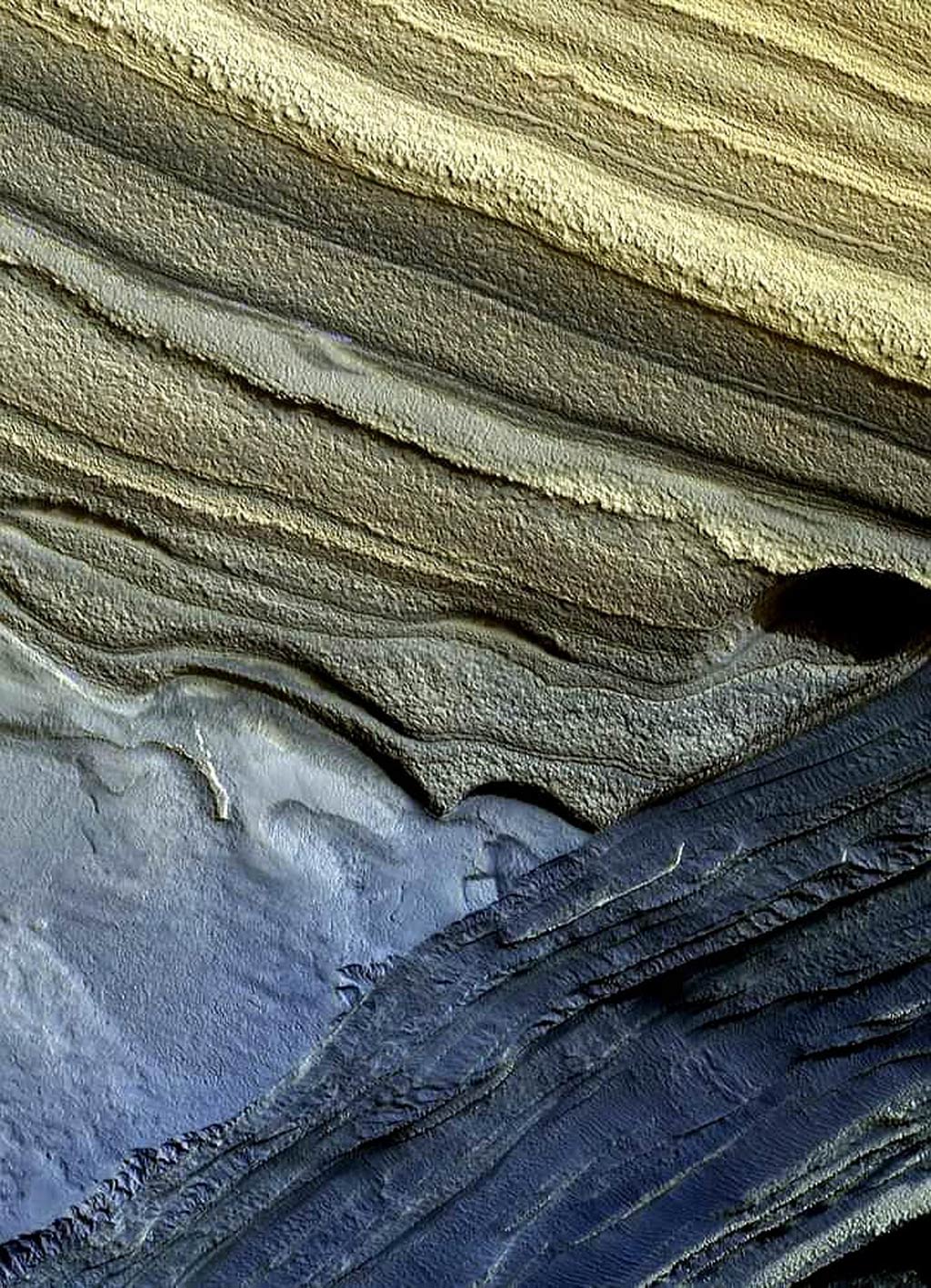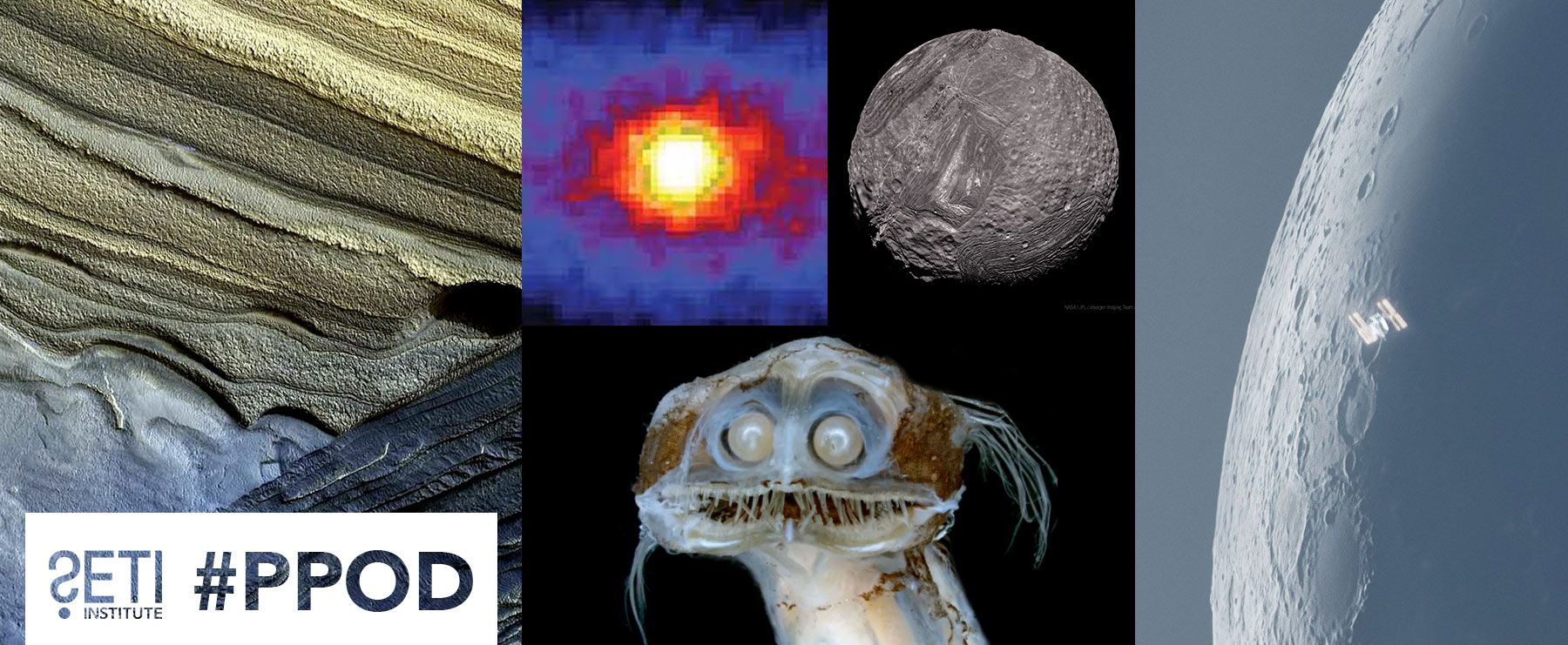
Planetary Picture of the Day
Week of January 31, 2022
That pesky groundhog predicts six more weeks for winter (at least for those of us in the northern hemisphere), but we can at least admire these sights from around the solar system!
Monday, January 31, 2022
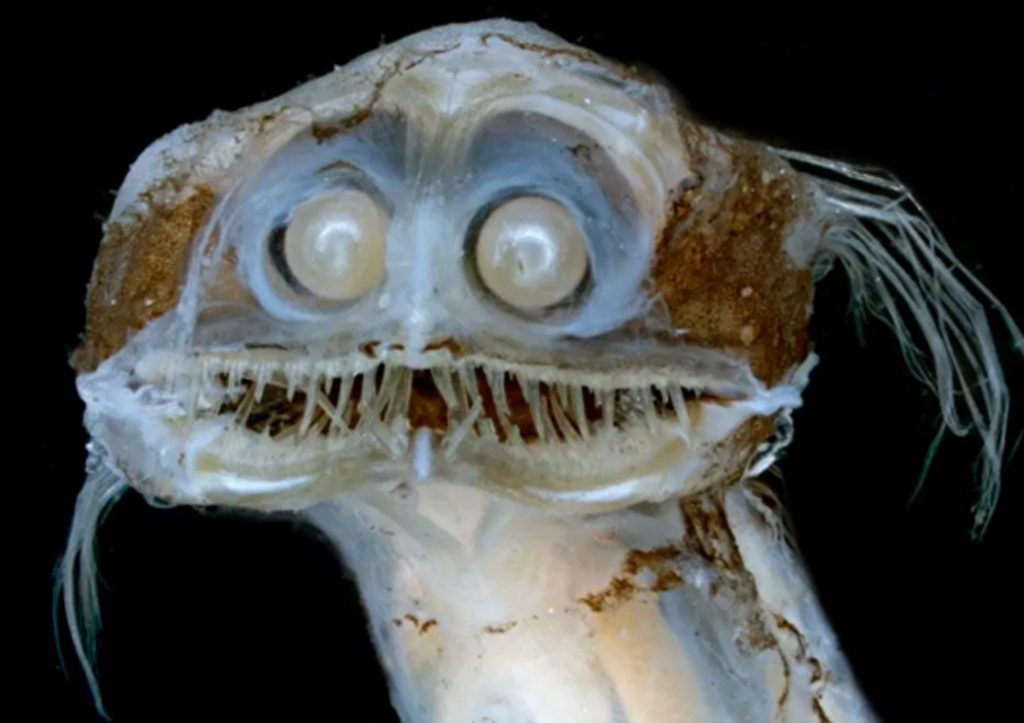
Dave Johnson/Harvard University/Smithsonian
Earthling of the Deep
A preserved specimen of a deep-sea telescopefish (Gigantura indica), from the Smithsonian Museum. These predators are about 20 centimeters long but have stretchy jaws and stomachs allowing them to gulp prey bigger than themselves. They live in tropical and subtropical waters, about 500-2000 meters deep.
Tuesday, February 1, 2022
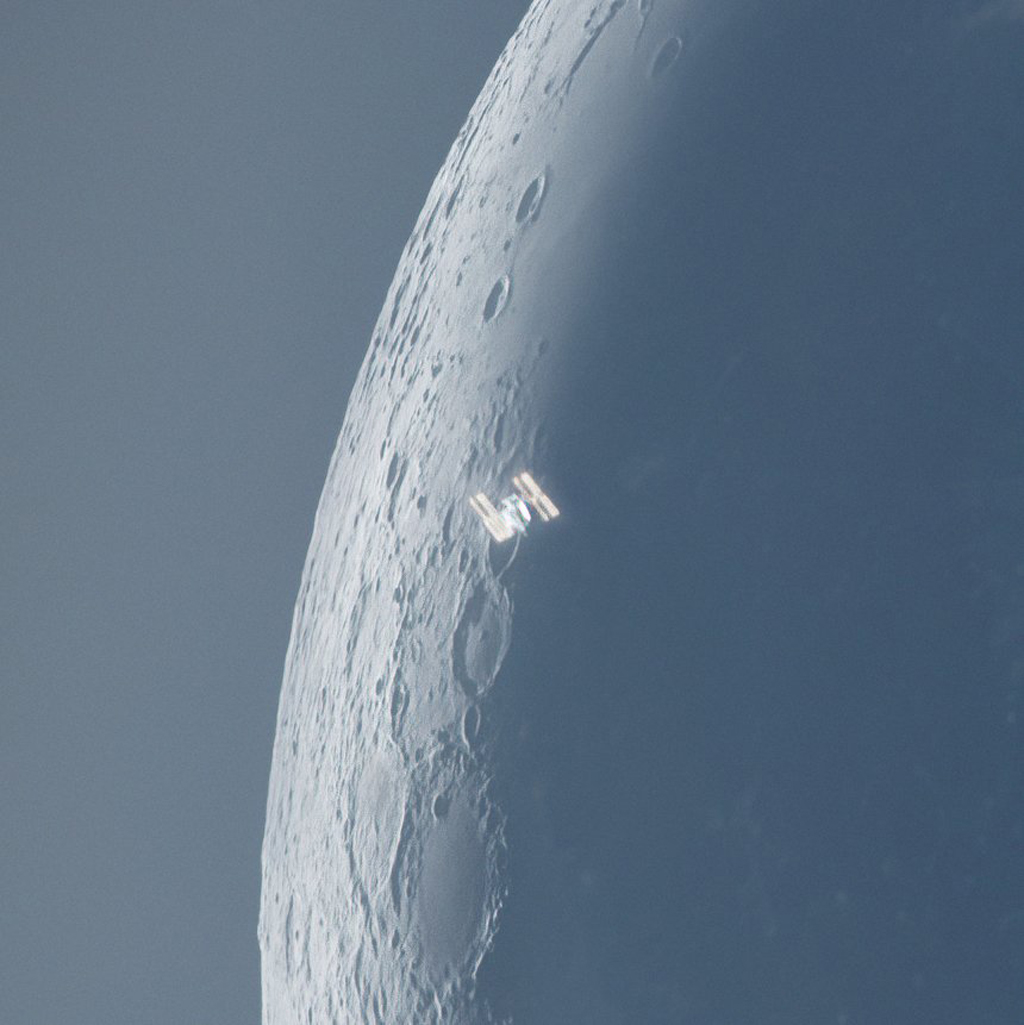
Credit: A. James McCarthy, @cosmic_background
Space Station Transit
The International Space Station captured while transiting the 4% illuminated Moon during the daytime.
Wednesday, February 2, 2022
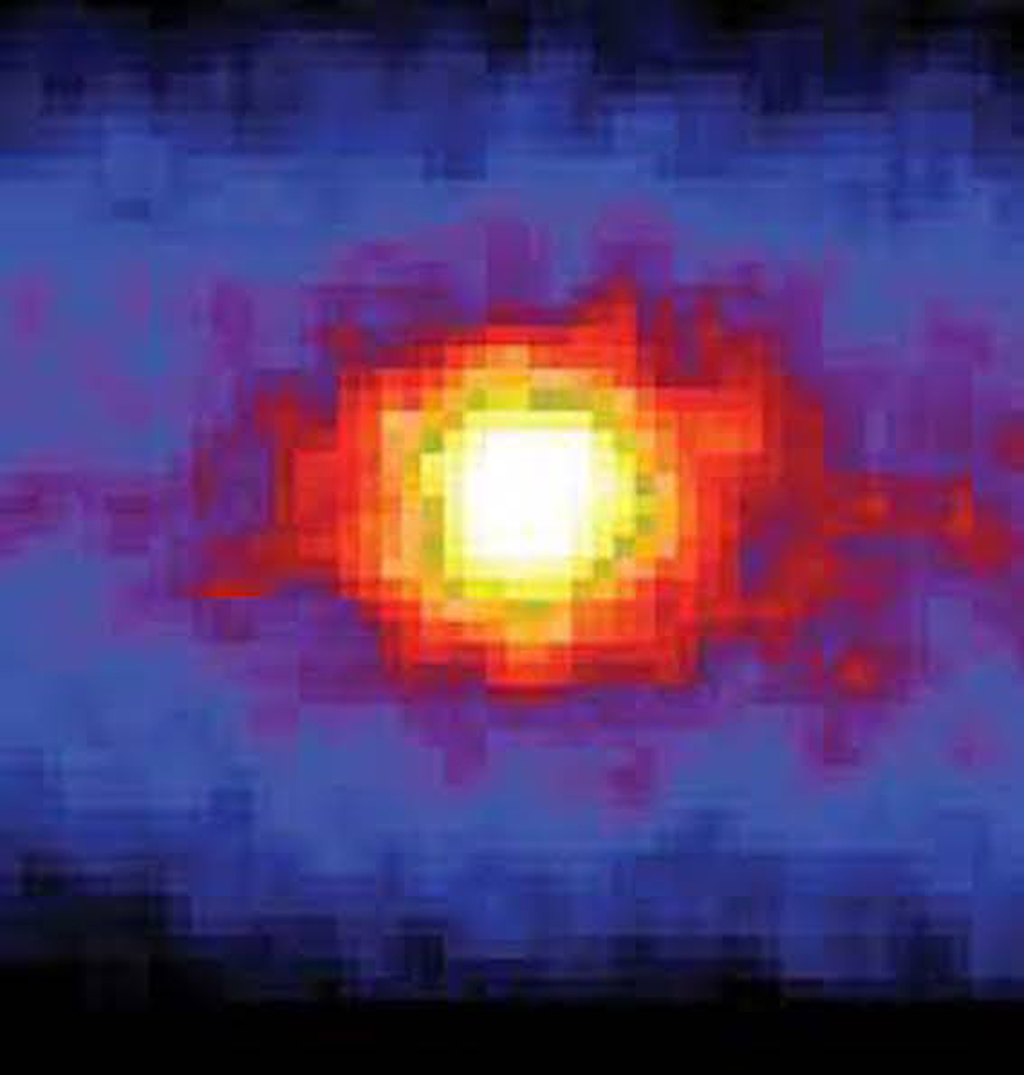
Credit: R. Svoboda and K. Gordan (LSU)
Solar Neutrinos
This photo of the Sun might not look too impressive until you realize it was taken at night, not looking up but looking down, through the entire Earth, using neutrinos rather than light. Data collected by the Super-Kamiokande neutrino detector.
Thursday, February 3, 2022
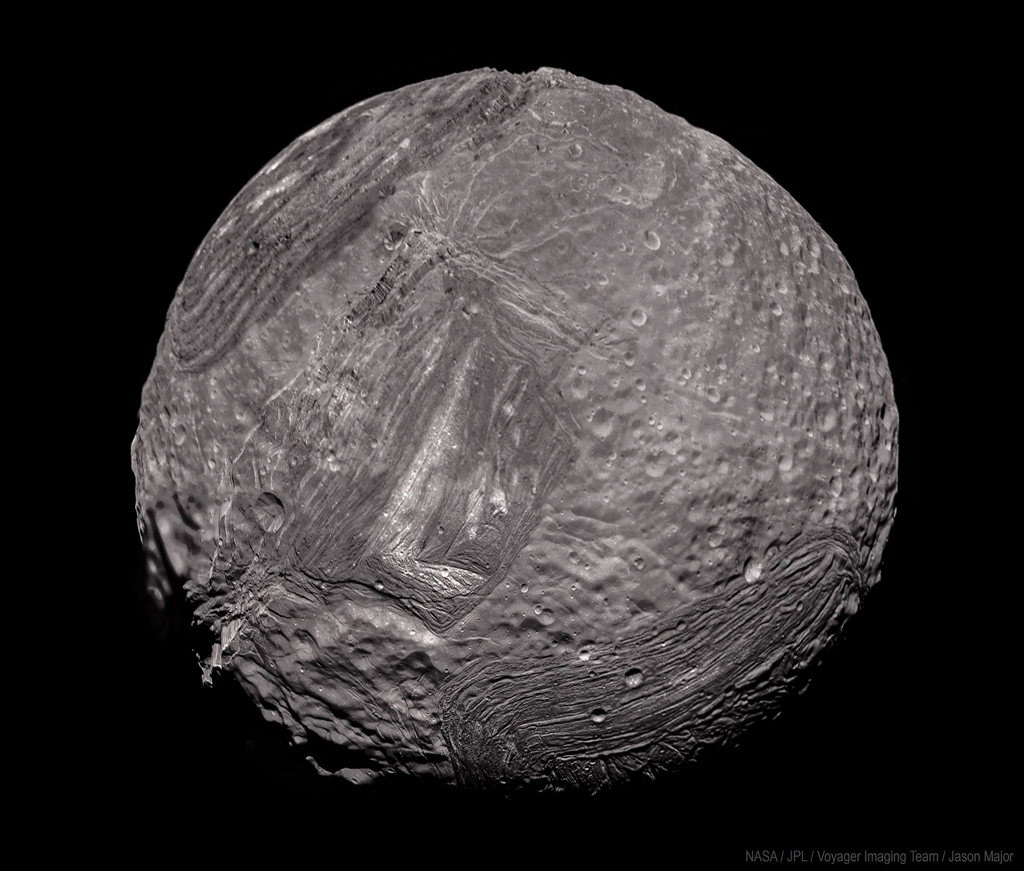
Credit Image: NASA/JPL-Caltech/Voyager Imaging Team/Jason Major
Miranda
Miranda is one of Uranus' moons and probably the worst paint job in the entire solar system! About 470 km in diameter, it is made of rock and ice. It is probably the smallest object in the solar system in hydrostatic equilibrium (spherical under its own gravity), and it is likely differentiated. Its landscapes and geology are also extremely varied, including a 20-km high scarp, and chevron-like tectonic features. It almost looks like a patchwork of different terrains put together in haste.
That's actually one of the hypotheses to explain it: Miranda could have been destroyed by an large impact, and its debris reassembled randomly. The current (and favored) hypothesis is different, though, and involves extensional processes and/or upwelling of warm ice from the interior.
Global view made from 8 images captured by Voyager 2 on January 24, 1986, from a distance of about 32,000 km.
Friday, February 4, 2022
Source: https://buff.ly/3vlbYad
Credit: NASA / JPL / University of Arizona / HiRISE
Written by: Shane Byrne
Mars, Northern Polar Layers
The layered deposits at the North Pole of Mars are a 3-kilometer-thick pile of powdery, water ice sheets that are about 1000 kilometers in diameter. The layers record information about the climate dating back a few million years in Martian history.
In many places, erosion has created scarps and channels that expose these layers. The tan colored layers are the dusty water ice of the layered polar deposits; however, a section of bluish layers is visible below them. These bluish layers contain fragments of rock the size of sand that probably formed a large field of polar dunes before the dusty ice that covered it was deposited.
The lack of a polar ice cap in this bygone era attests to the variability of the Martian climate, which undergoes greater changes over time than Earth's.

